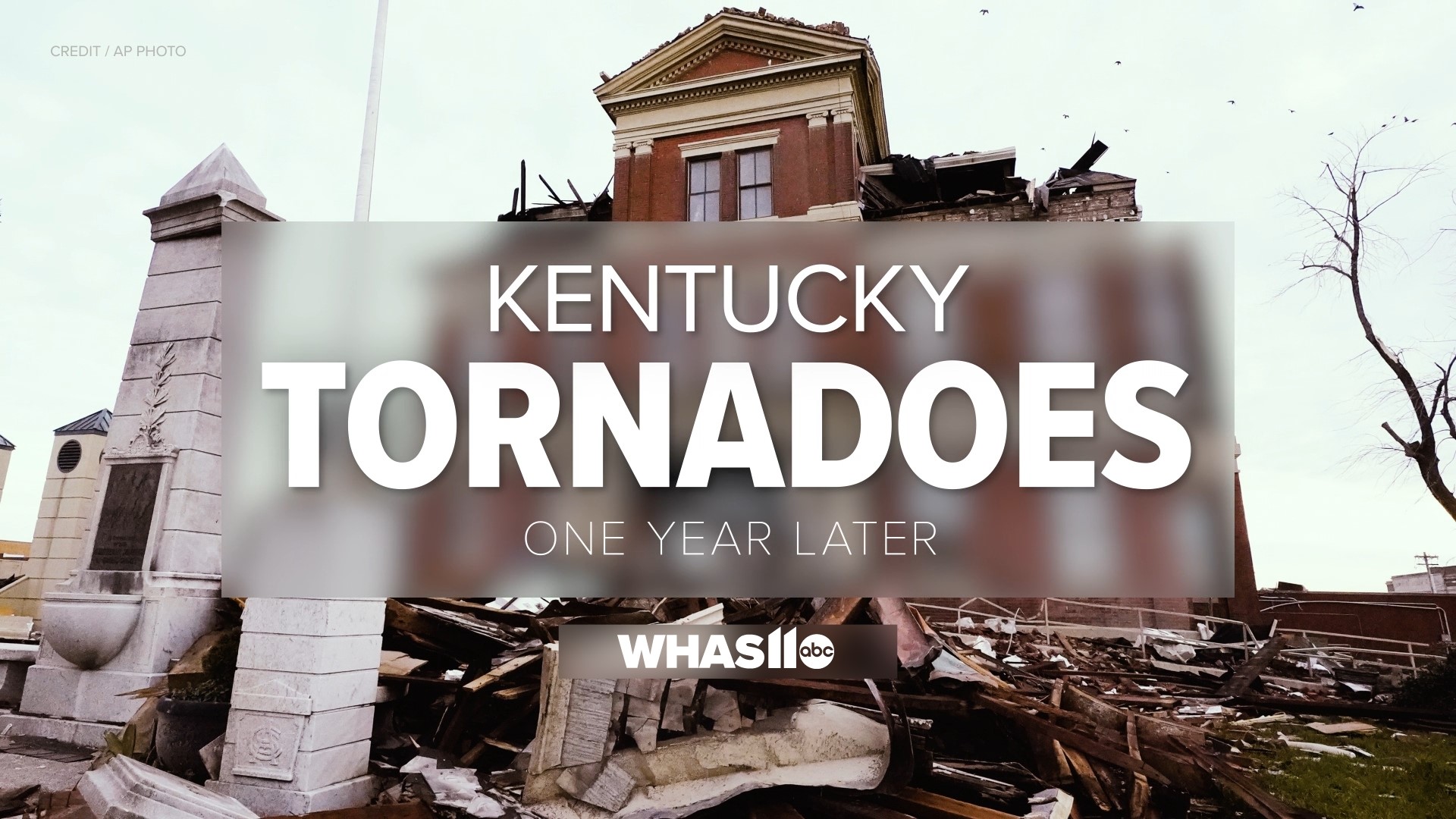Revisiting western Kentucky one year after deadly tornadoes
For the survivors who stayed after the tornadoes touched down last December, the past several months have been filled with grief and hope.
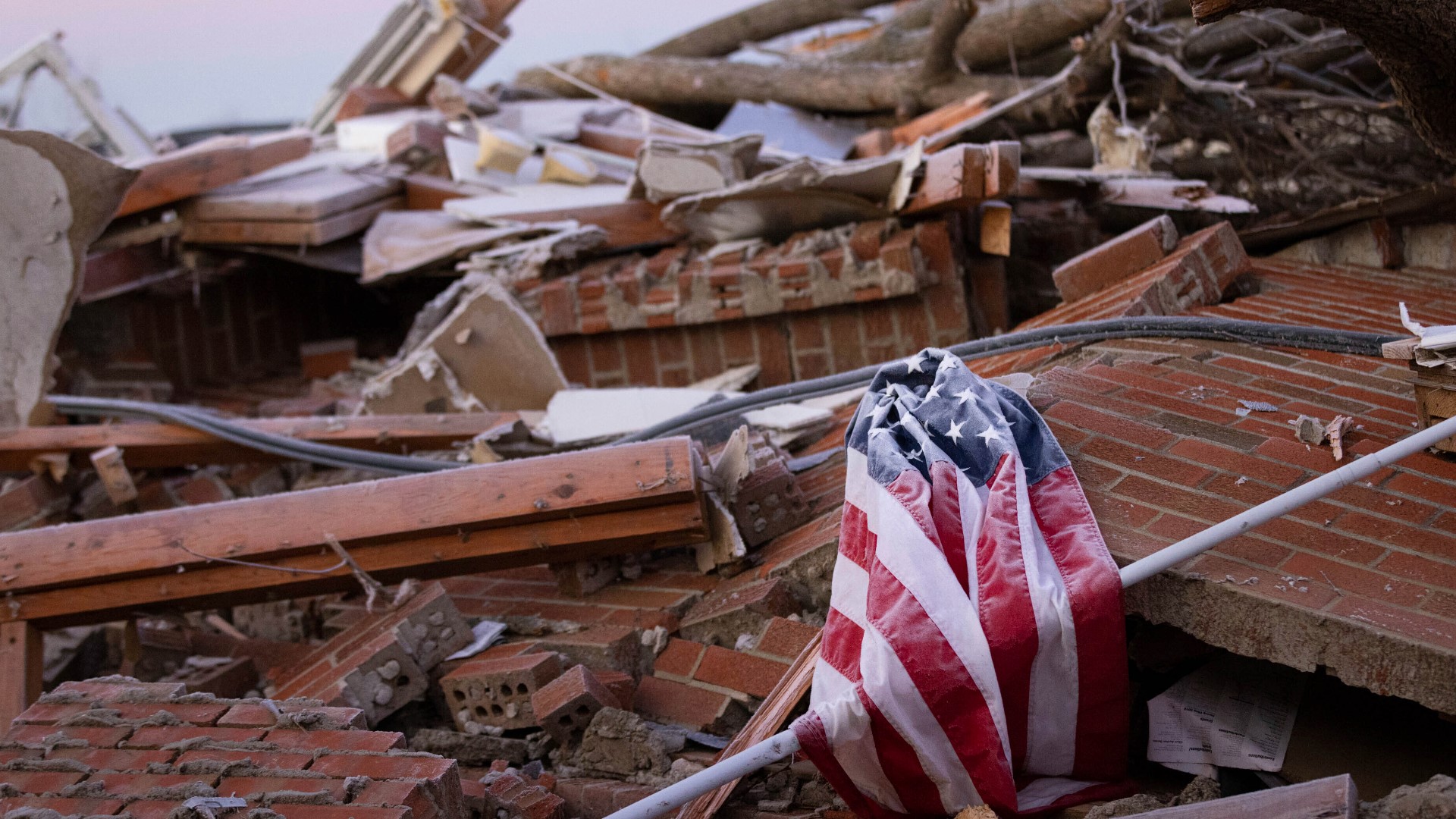
Late into the night on Dec. 10, 2021, devastating tornadoes ripped through several western Kentucky communities.
Dozens of Kentuckians were killed and hundreds of lives were forever changed.
One year later and the scars of that night still haunt those who survived.
In this WHAS11 Special Report, hear from the survivors about what happened, how far they've come and what still stands in the way of progress.
160+ miles of terror, destruction What happened?
Tornado outbreaks in December are rare, especially in Kentucky.
The tornadoes that devastated western Kentucky were the result of a supercell that formed in Arkansas and kept going through Tennessee, Kentucky and Indiana.
Western Kentucky received the most of the storm's wrath, with the hardest-hit areas being Mayfield, Dawson Springs and Bowling Green.
The warnings had been coming for more than a week. Experts knew the possibilities of severe weather, but first responders have since said nothing could have prepared their community for the wrath of this storm.
There wasn't just one tornado, though. Multiple tornadoes ranging in intensity from EF-1 to EF-4 touched down across Kentucky.
According to the National Weather Service, the tornado that hit Mayfield traveled 163.6 miles in Kentucky alone, doubling the previous record of 79 miles set back in the 1974 Super Outbreak.

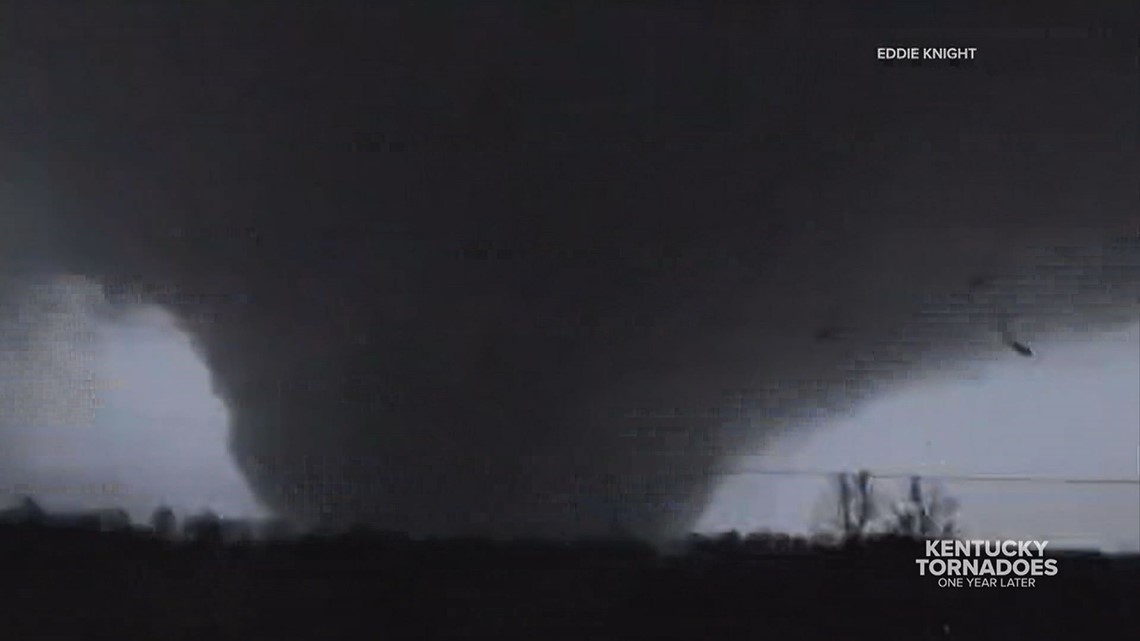
Despite the strongest tornadoes staying to the west and south, WHAS11 was on air for over 10 hours straight through the night and into Saturday, Dec. 11, tracking several tornado touchdowns.
It was the worst case scenario, with the storm striking in the middle of the night.
"In the middle of the night, you've got to have ways to receive warning," National Weather Service Meteorologist John Gordon said. "You have to, that's got to be the takeaway."
In Memoriam Remembering the Kentuckians who died
Eighty people were killed across the commonwealth as a result of the storm's wrath.
Now, those families and friends are doing what they can to keep their memories alive. For weeks after the devastating tornadoes, their photos hung on a fence outside the Graves County Courthouse, a reminder of those lost in the storms.
The victims ranged in age, the youngest being a 2-month-old girl from Dawson Springs.
My New Kentucky Home Survivors forced to redefine 'home'
In the small town of Dawson Springs damaged homes stretch in every direction.
When the sirens sounded, it took less than 10 minutes for the tornado to tear through 75% of the town, taking down everything in its path.
For the survivors who chose to stay behind after the disaster and rebuild, they've now been forced to redefine "home."

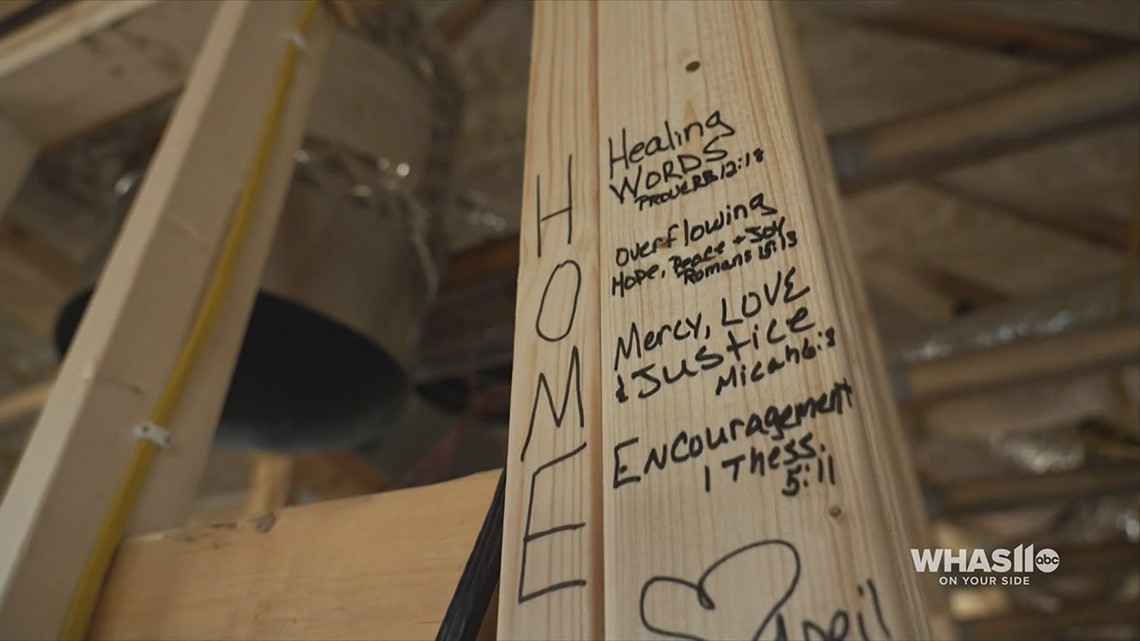
The last time WHAS11 spoke with Deloris Williams, mounds of debris lined her street. That was in February; she said she wasn't able to find a place to live until five months after the storm.
"Even though I've found an apartment with the help of my cousin, which I am truly grateful for, you don't feel like you're at home," Williams said.
One year later and Williams still holds trauma from that horrific night.
"I can't help but get afraid and I get stressed," she said. "I think, 'please God, don't let this happen again. Please don't.'"

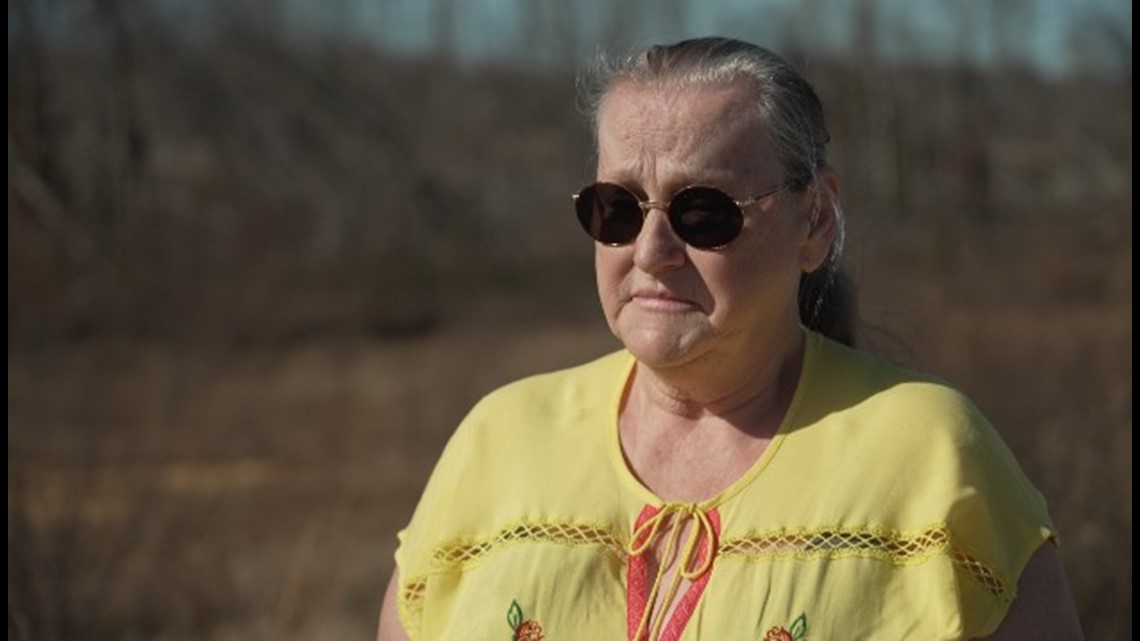
Meanwhile, in Bowling Green, Habitat for Humanity has built several new homes for survivors in the year since the disaster.
Each house comes with a small crawl space underneath, but when an EF-3 tornado, like the one that struck Bowling Green, is barreling toward your home, where do you go?
Kentucky Governor Andy Beshear told WHAS11 that specially fortified storm shelters are headed to Bowling Green and other parts of western Kentucky for people without basements.
"We have kids down here that have lived through this and when it rains, that's a concern to them. A storm isn't a storm anymore," Rodney Goodman, who leads the Habitat for Humanity Bowling Green, said.
Beshear said despite so much progress being made to rebuild in the first year, there’s still several hundred more homes to be built.

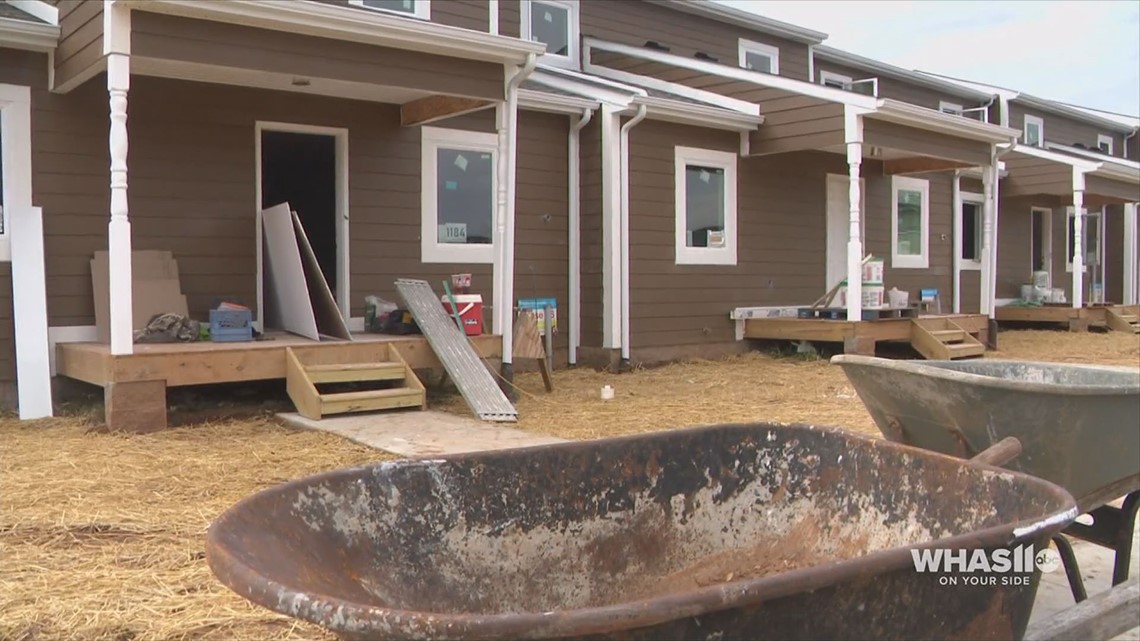
Gov. Beshear reflects 'Everywhere you look, there’s not even a wall.'
The night of the December tornadoes, Beshear said he was woken up to a call saying the tornado that hit Mayfield was worse than anyone predicted and the damage would be severe.
"They did not know how long it would be on the ground,” he recalled.
After the tornado left Mayfield, the governor went to survey damage, visiting the collapsed candle factory and downtown area.
“It almost made you dizzy,” Beshear said. “You can feel the destruction and just see, everywhere you look, there’s not even a wall up.”

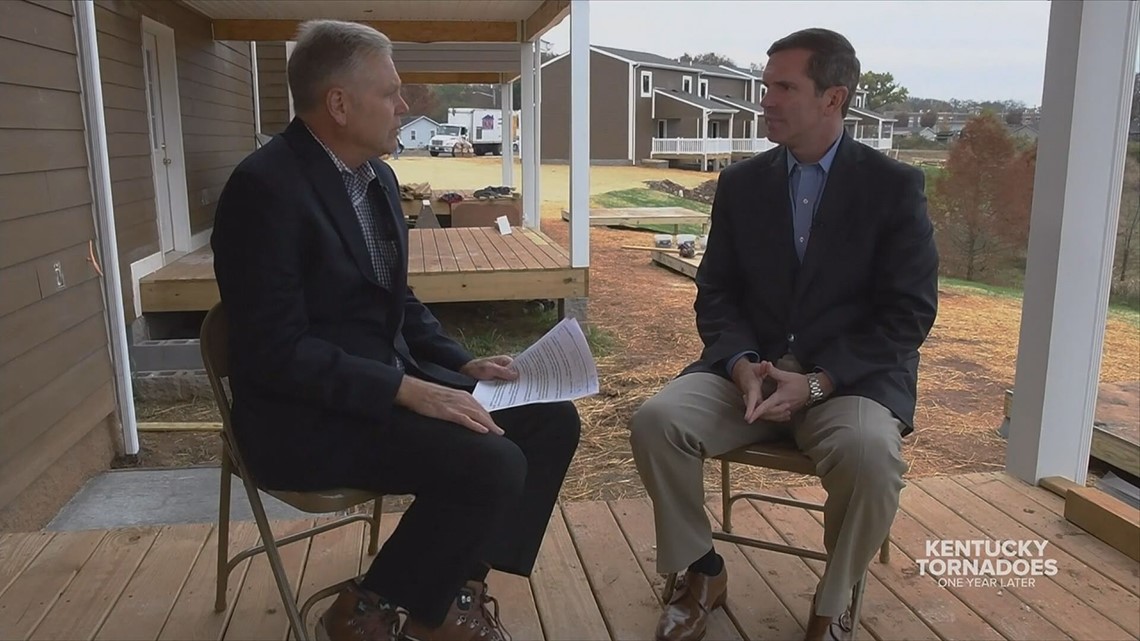
Beshear committed to helping western Kentucky residents for as long at it took and one way he helped was by making funds accessible to survivors.
He created the Team Kentucky Tornado Relief Fund, which raised more than $52 million. Roughly $10 million is left of the fund with most of the money going to pay for funerals, housing and long term recovery groups.
“We Kentuckians are not only strong, we are amazing people,” Beshear said. “We open our hearts to one another. All of this stuff that people typically argue about flies out the window and we’ll do anything for one another.”
Candle Factory Collapse 'We feared we had a mass casualty event.'
When the storm struck Mayfield, a powerful EF-4 tornado was heading towards the Mayfield Candle Factory. More than 100 workers were feared missing, potentially crushed beneath heavy machinery and steel beams.
"We feared we had a mass casualty event," Mayfield Police Chief Nathan Kent said.
Kyanna Parsons Perez turned to Facebook Live for help after she says 911 dispatchers told her there was nothing they could do.

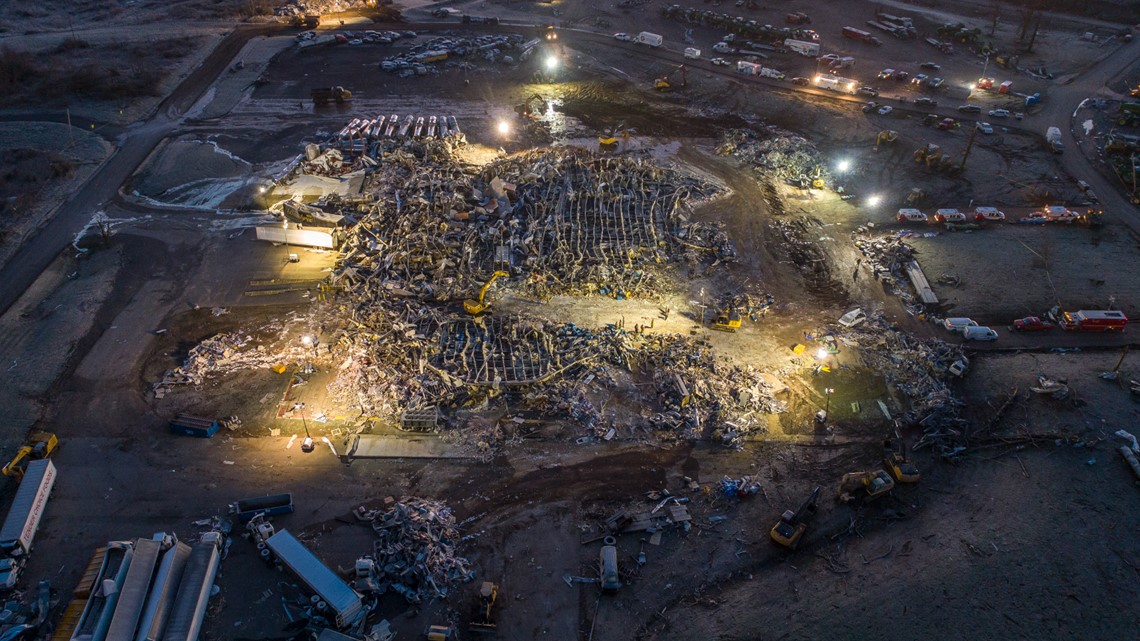
"I had to climb up to get out," Perez said. "They said they couldn't move an air conditioning unit because there was five foot of debris on top of it."
Thirteen people died in the collapse and all that's left of the candle factory is the concrete foundation.
"It's almost as if it never was," Perez said. "That wasn't a dream. That wasn't a nightmare. It was part of my life that happened."
Tracking the next storm Meteorologists reflect on December tornadoes
When reports of tornado damage began coming in on the night of Dec. 10, WHAS11's First Alert Stormteam went into action tracking and chasing the storm.
"Meteorologists around the Ohio Valley and mid-Mississippi River valleys were preparing for this severe weather threat and the potential for strong tornadoes days in advance," Chief Meteorologist Ben Pine said.
That night, the station stayed on the air for over 10 hours straight tracking multiple tornadoes.
Here's an inside look at what happened that night and how to stay prepared for not if, but when, the next tornado outbreak occurs.
Make it easy to keep up-to-date with more stories like this. Download the WHAS11 News app now. For Apple or Android users.
Have a news tip? Email assign@whas11.com, visit our Facebook page or Twitter feed.


